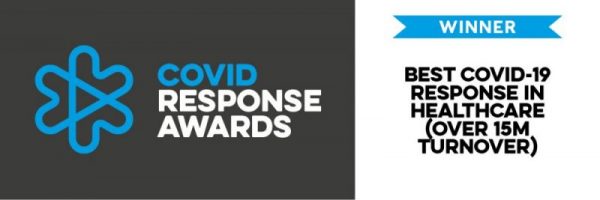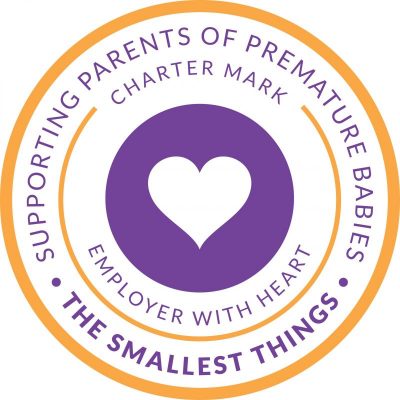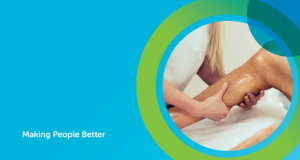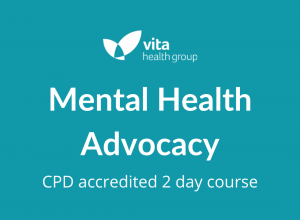Hallmarks of inflammatory arthritis are: early morning stiffness for more than 30 minutes, improvement with activity and joint swelling or warmth.
Hallmarks of degenerative pain (osteoarthritis) are: general stiffness, worsening of pain with activity and weight bearing.
Early inflammatory arthritis
Inflammatory arthritis is an umbrella term. You may have early inflammatory arthritis if your new joint pain is associated with joint swelling and early morning stiffness for more than 30 minutes.
Your GP will carry out a number of tests and you may be referred for a rheumatology assessment. Established inflammatory arthritis is subdivided into several diseases and needs to be differentiated from osteoarthritis and persistent pain.
Gout/CPPD
Gout is an inflammatory arthritis caused by uric acid crystals in and around joints. Raised uric acid levels are the main risk factor for this, and are usually caused by one or more from the following list:
- Kidney impairment
- High alcohol consumption (particularly beer)
- Excessive fructose consumption (for example in fruit juice)
- Medicines such as diuretics and long term aspirin
- Family history of gout
Gout is more common in men than women (gout is extremely rare in pre-menopausal women).
Gout can cause acutely painful attacks that resolve within 1-2 weeks. The commonest joints involved (in order of frequency) are the big toe, other joints within the feet, ankles, knees, elbows, wrists and hands,
Treatment of these acute attacks is with anti-inflammatory medicines. Gout can be a longer term problem causing joint damage, uric acid collection in soft tissues (tophi) and kidney damage.
Treatment is aimed at controlling inflammation and reducing blood uric acid levels.
Psoriatic arthritis
Psoriatic arthritis causes inflammation in and around the joints. It usually affects people who already have psoriasis, a skin condition that causes a red, scaly rash, especially on the elbows, knees, back, buttocks and scalp. However, some people develop the arthritic symptoms before the psoriasis, while others will never develop the skin condition.
Psoriasis can affect people of any age, both male and female, but psoriatic arthritis tends to affect more adults than young people.
Ankylosing Spondylitis
Ankylosing Spondylitis (AS) or Axial Spondyloarthritis is an inflammatory arthritis of the back and spine which can occur with or without inflammation in other joints. In AS, symptoms typically first occur in the early twenties, although average diagnosis lags 10 years behind the onset of symptoms. Men are affected three times more commonly than women. Back pain is common in the general population but back pain of more than 3 months duration is inflammatory if it fulfils 4 out of the following 5 criteria:
- Age at onset less than 40 years
- Improvement with exercise
- Pain at night (with improvement on getting up)
- Onset starts gradually
- No improvement with rest
AS is related to some other types of arthritis such as psoriatic arthritis, and other conditions such as crohns disease and ulcerative colitis. It is strongly associated with a type of eye inflammation called iritis or uveitis.
AS responds well to physiotherapy, hydrotherapy, daily stretching exercises and medicines including non-steroidal anti-inflammatory drugs and newer biologic therapies. This will form part of the treatment following diagnosis in the rheumatology clinic.
Juvenile Idiopathic Arthritis
Inflammatory arthritis affects around 1 in every 1000 children and is called juvenile idiopathic arthritis (JIA). The diagnosis of JIA is made when a child under 16 presents with joint inflammation persisting for at least 6 weeks where other known conditions have been excluded. There is no specific diagnostic test for JIA.
Delayed diagnosis is common, not least because young children rarely complain of pain and seek medical attention with non-specific complaints such as limps or being reluctant to walk or play sport.
Children and young people with joint swelling, joint pain lasting more than 6 weeks or unexplained problems with normal movements should be examined for evidence of joint problems and referred to a paediatric rheumatologist for further assessment.
JIA is significantly associated with chronic anterior uveitis (an inflammatory condition of the eye). Children and young people often don’t complain of a change in vision and all children with JIA are regularly screened for this problem. Delaying a diagnosis of JIA may mean missing a potentially reversible cause of blindness.
JIA commonly continues to be active and cause severe problems in adults even when it may have gone into remission and caused no problems for months and even years. Adults with a previous history of JIA and new joint symptoms should be referred for a rheumatological assessment.
Osteoarthritis
Osteoarthritis (OA) is a condition where surfaces within joints become damaged so the joint doesn’t move as smoothly as it should. This can cause joint pain and stiffness and over the longer term cause joint damage. Older terms for OA are degenerative joint disease or ‘wear and tear arthritis’. OA can affect any joint but commonly the knees, hips, hands, back, neck and feet.
When a joint develops osteoarthritis, some of the cartilage covering the ends of the bones gradually roughens and becomes thin, and the bone underneath thickens. In severe osteoarthritis, the cartilage can become so thin that bones rub against each other and start to wear away. The loss of cartilage and the wearing of bone can change the shape of the joint, and results in joint damage.
The symptoms of OA are joint pain which is worse with activity and weight bearing and at the end of the day. Joints may grind or creak and may appear swollen due to bone thickening or thickening of the joint lining and extra fluid. Muscles may weaken or appear wasted and mobility or movements associated with affected joints may be impaired. There is no cure for OA and the most important self care measures include remaining active and maintaining a healthy weight. Painkillers may be helpful to maximise activity but some patients will go on to need joint replacement surgery.
Raynauds
In people who have Raynaud’s, the small blood vessels in the extremities are over-sensitive to changes in temperature. This causes a Raynaud’s attack where the fingers (and sometimes toes) may change colour, usually but not always, from white, to blue, to red. Colour changes are often accompanied by pain or a tingling feeling. A Raynaud’s episode can be a very uncomfortable, possibly painful, process. It can also make everyday tasks, like buttoning a jacket or unzipping a purse, very difficult.
Raynaud’s symptoms generally affect the fingers and toes, but all extremities can be involved, including the hands, feet, ears, nose and nipples. Symptoms of Raynaud’s are a colour change in the extremities, cold extremities and numbness, tingling or pain.
There are two types of Raynaud’s phenomenon:
- Raynauds alone or ‘primary’ Raynauds – this is very common and causes no long term problems. Episodes may be short lived and be prevented by keeping the hands and feet warm. Primary Raynauds often runs in families. Some medicines may help managing primary Raynauds.
- Raynauds with another condition or ’secondary Raynauds’– this is quite rare and occurs for example in association with lupus. Secondary Raynauds may cause problems such as skin ulcers and patients with this condition should be managed by a rheumatologist who can provide expert medical care.
Rheumatoid Arthritis
Rheumatoid arthritis (RA) is an autoimmune arthritis that affects 1% of the adult population; women three times more commonly than men. It can occur at any age, but most often between the ages of 40 – 50. Usually RA involves joints of hands and feet, but other joints can also be affected. The diagnosis of RA is based on symptoms and signs of joint inflammation (joint swelling and early morning stiffness lasting more than 30 minutes) with supporting blood tests and X-rays
Treatment begins as soon a possible after the onset of symptoms to treat inflammation. Treatments include a combination of disease modifying anti-rheumatic drugs (DMARDs). As well as medicine, patients will access to the multi-disciplinary team, which includes physiotherapy, podiatry, occupational therapy and clinical nurse specialist to help manage symptoms.
Systemic Lupus Erythematosus
Lupus is an autoimmune disease, which means that the immune system, the body’s defence system, produces antibodies that attack the body’s own tissues, causing inflammation.
There are two main types of lupus:
- Discoid lupus where only skin is affected and usually looked after by dermatologists
- SLE affects 1 in 1000 people and is much more common in women. The most common symptoms of SLE are:
- Raynauds phenomenon
- Extreme tiredness (fatigue)
- Systemic lupus erythematosus (SLE)
- Joint pains
- Skin rashes
Other symptoms which can be quite common are:
- Fever
- Swelling of the lymph glands
- Weight loss
Lupus can affect many different parts of the body, and when internal organs such as the heart, lungs, brain or kidneys are involved it can be much more serious. But most people will only have one or a few of the possible symptoms, and many people will find that the symptoms come and go. Diagnosis and treatment require specialist rheumatological care.
Polymyalgia Rheumatica
Polymyalgia rheumatica (PMR) is an inflammatory condition that causes many painful muscles (poly = many, myalgia = muscle pain). PMR mainly affects the muscles of the shoulder and thigh. PMR can start at any age from 50 but usually affects people over the age of 60. Women are affected 2–3 times as often as men and it affects about 1 in 2,000 people overall.
Symptoms are severe and painful stiffness, often worse in the morning, especially in shoulders and thighs and usually affecting both sides. PMR often strikes suddenly, appearing over a week or two and sometimes just after a flu-like illness. Other symptoms include feeling generally unwell, fever, weight loss and overwhelming tiredness.
The symptoms are quite different from the ache felt after exercise. The pain and stiffness is often widespread, is worse when resting and improves with activity or as the day goes on and may be severe enough to interrupt sleep.
PMR is sometimes associated with painful inflammation of the arteries of the skull. This is called giant cell arteritis (GCA) or temporal arteritis and needs prompt treatment as there’s a risk of damage to the arteries of the eyes. About 20% of people with PMR also develop GCA, while 40–60% of people with GCA also have symptoms of PMR. The symptoms of GCA are: severe headache, tenderness at temple or jaw pain when chewing, scalp pain and blurred or double vision. Anyone with these symptoms in addition to PMR need urgent referral to rheumatology.
Joint Hypermobility
Joint hypermobility (JH) is common and often referred to as being ‘double jointed’. People with JH have very flexible joints and most have no symptoms or problems.
Some patients do have other symptoms associated with their JH such as muscle and joint pains and some level of fatigue. Easy bruising and clicking of joints are common symptoms that should not cause concern. JH is a spectrum with many people having no symptoms but a few having several problems and the new terminology of ‘hypermobility spectrum disorder (HSD) has replaced older terms such as EDS type 3 or joint hyper-mobility syndrome.
The associated symptoms of HSD may include abdominal pain with or without some levels of bladder and bowel dysfunction and even more rarely, postural orthostatic tachycardia syndrome (POTS), hernia, uterine or rectal prolapse and joint subluxation and dislocation.
There is often confusion regarding terminology in hypermobility as JH can be one of many features in some extremely rare, complex disorders such as Ehlers Danlos syndrome and Marfans. It is important to recognise that most people with hypermobile joints do not have these rare, serious diseases.
Many people need only reassurance to carry on normal activities when JH is present but where treatment is needed to help with joint pain, physiotherapy, occupational therapy and non-medical pain management are beneficial. The aims of treatment for JH and HSD are to improve current symptoms, as well as avoiding de-conditioning, muscle weakness and persistent pain. Associated non-joint symptoms may need referral to relevant medical specialities.
Vita is an award-winning, CQC registered healthcare provider














